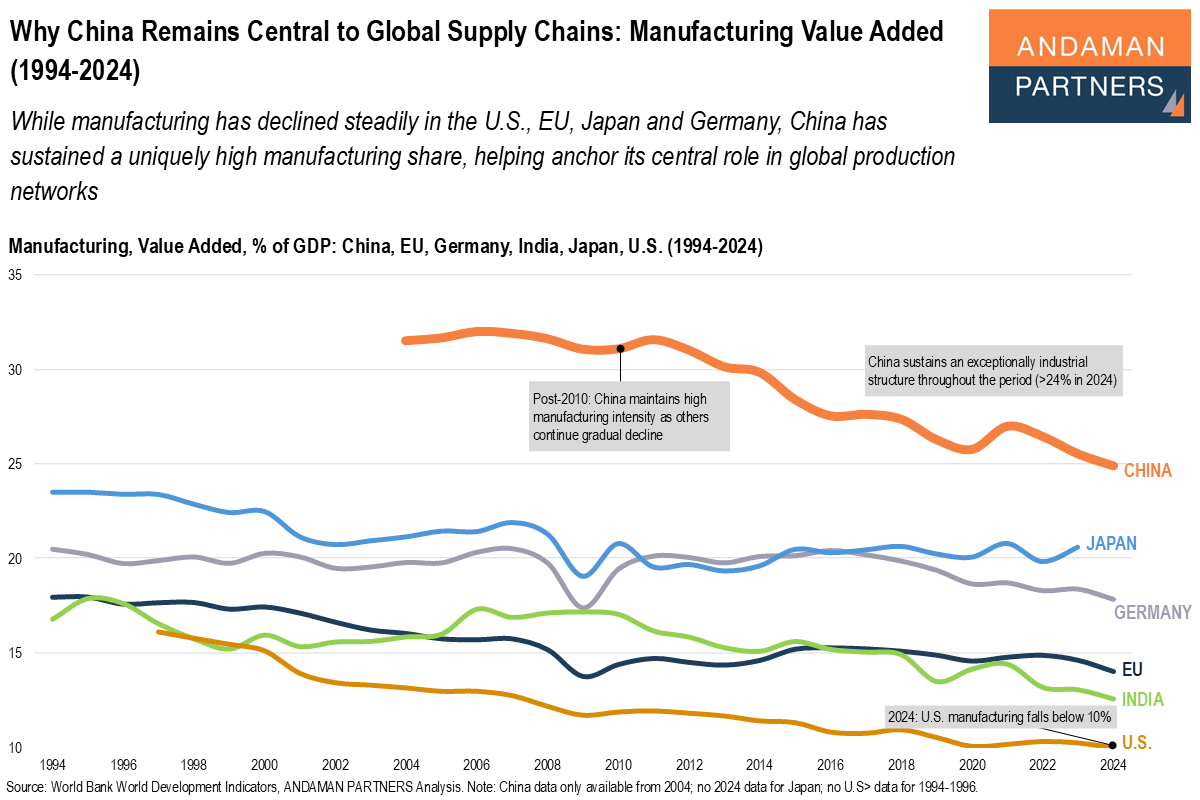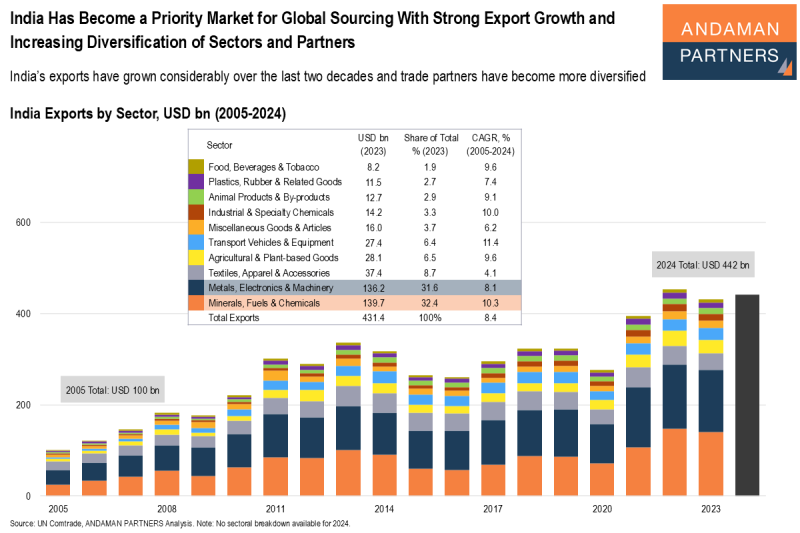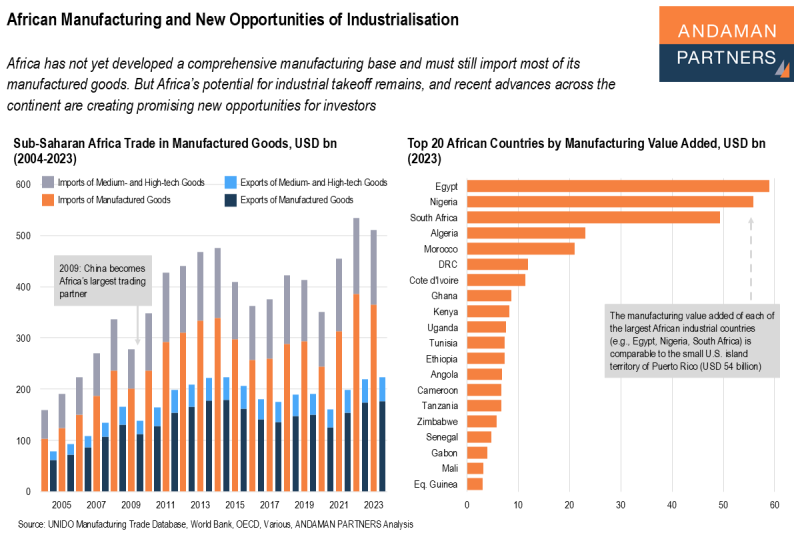While manufacturing has declined steadily in the U.S., EU, Japan and Germany, China has sustained a uniquely high manufacturing share, helping anchor its central role in global production networks.
Global manufacturing structures have diverged sharply over the past three decades. While the manufacturing share of GDP has declined steadily in the U.S., EU, Japan and Germany—reflecting the long-term shift toward services—China has sustained an unusually high manufacturing intensity throughout the period.
This structural divergence is the foundation of the modern global production system. Most advanced economies normalised toward 12-18% manufacturing shares; China remained above 25% even as its economy grew tenfold.
This sustained industrial structure helps explain China’s centrality in global supply chains. After 2010 in particular, China maintained an elevated manufacturing share at a time when other major economies were continuing gradual de-industrialisation. This divergence made China uniquely capable of absorbing global production at scale, extending deep supplier networks across electronics, machinery, metals, chemicals and consumer goods.
The fact that China in 2024 is still at 24.9% of manufacturing value added as % of GDP, contrasted with the downward trajectories of the U.S., EU, Japan, and Germany, illustrates why China became the world’s dominant manufacturing hub during the hyper-globalisation era and why it is still central to manufacturing and supply chains.
Also by ANDAMAN PARTNERS:
ANDAMAN PARTNERS supports international business ventures and growth. We help launch global initiatives and accelerate successful expansion across borders. If your business, operations or project requires cross-border support, contact connect@andamanpartners.com.

AAMEG Sundowner Event in Cape Town Ahead of Mining Indaba 2026
ANDAMAN PARTNERS is pleased to sponsor and support the AAMEG Pre-Indaba Cocktail.

ANDAMAN PARTNERS to Attend Future Minerals Forum 2026 in Riyadh, Saudi Arabia
ANDAMAN PARTNERS Co-Founders Kobus van der Wath and Rachel Wu will attend the Future Minerals Forum (FMF) in Riyadh, Saudi Arabia.

ANDAMAN PARTNERS to Attend Investing in African Mining Indaba 2026 in Cape Town
ANDAMAN PARTNERS Co-Founders Kobus van der Wath and Rachel Wu will attend Investing in African Mining Indaba 2026 in Cape Town, South Africa.

Why China Remains Central to Global Supply Chains: Manufacturing Value Added (1994-2024)
While manufacturing has declined steadily in the U.S., EU, Japan and Germany, China has sustained a uniquely high manufacturing share.
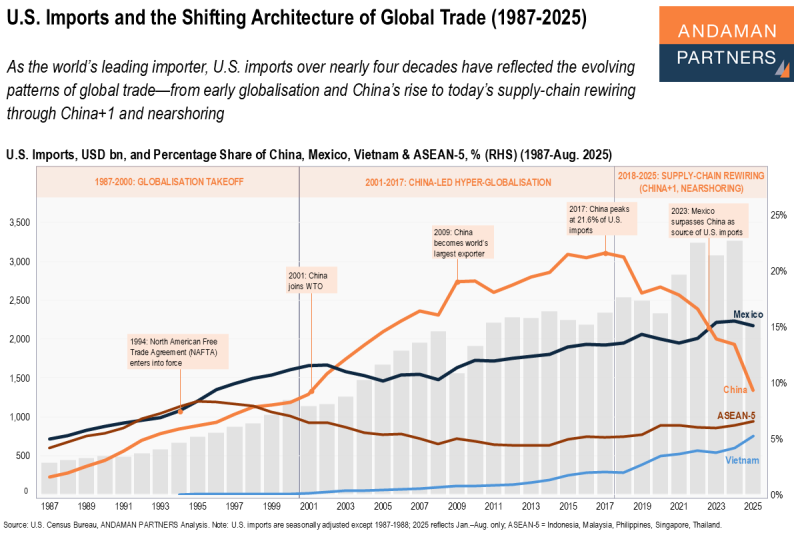
U.S. Imports and the Shifting Architecture of Global Trade (1987-2025)
As the world’s leading importer, U.S. imports over nearly four decades have reflected the evolving patterns of global trade.
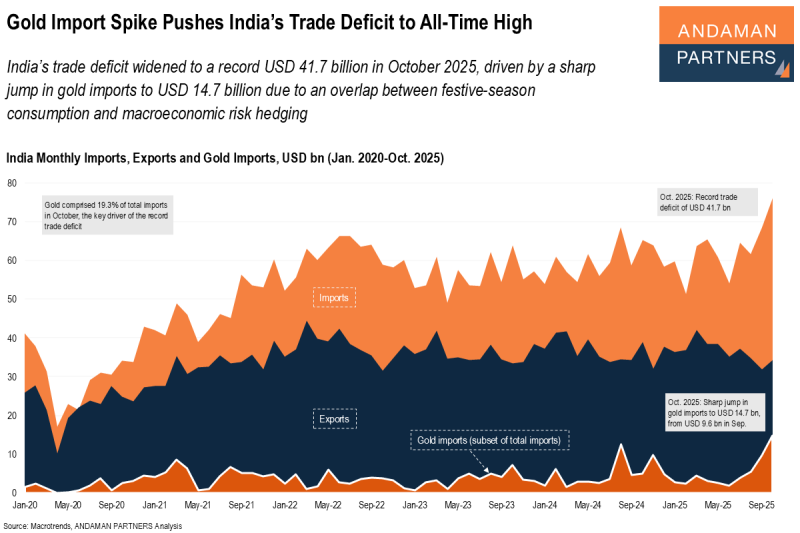
Gold Import Spike Pushes India’s Trade Deficit to All-Time High
India’s trade deficit widened to a record USD 41.7 billion in October 2025, driven by a sharp jump in gold imports to USD 14.7 billion.

